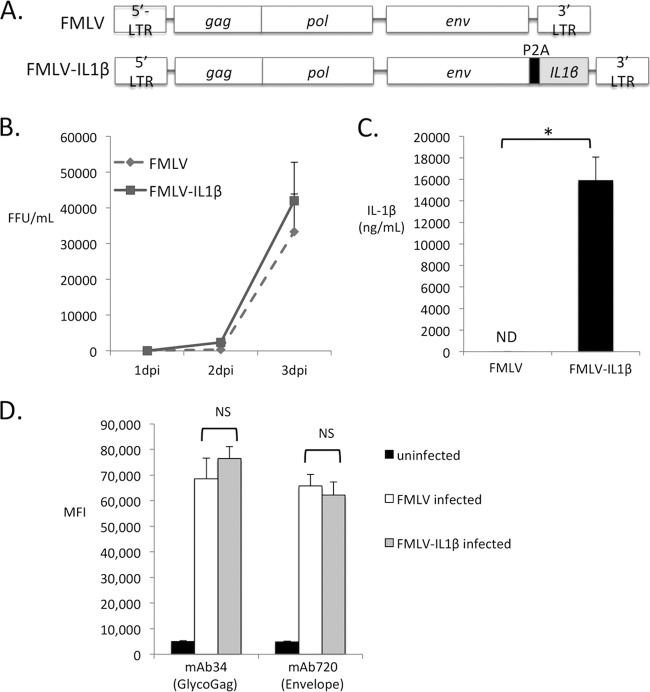FIG 1.
Construction of FMLV-IL-1β. (A) A full-length replication-competent clone of ecotropic FMLV was modified by the addition of coding sequence for the porcine teschovirus 1 2A peptide (P2A) followed by the coding sequence for a region of murine IL-1β from Val118 to Ser269. (B) The ability of the new virus (FMLV-IL-1β) as well as its parent virus to replicate in cultured murine fibroblasts was analyzed. Subconfluent Mus dunni cells were infected with virus at a multiplicity of infection (MOI) of 0.01. At 24-h intervals, supernatant samples were removed, and the concentration of focus-forming units (FFU) was measured by focus-forming assays. Each infection was carried out in triplicate, and data points represent the averages of three measurements. (C) The concentration of IL-1β released into the supernatant of infected Mus dunni cells at 3 dpi was measured by ELISA. Each data point is the average for three replicates. The asterisk indicates a P value of <0.05 (t test). ND, not detected. (D) Mus dunni cells were infected at an MOI of 0.001, and at 3 dpi, the cells were stained with MAb 34 or MAb 720, which recognize the viral proteins glyco-Gag and envelope, respectively, followed by a FITC-labeled secondary antibody. The mean fluorescence intensity (MFI) of the infected-cell gate was determined by flow cytometry and is represented in arbitrary units. Each bar represents the average of triplicate measurements. Error bars indicate the standard deviations of the data set. NS, not significant (P > 0.05).

